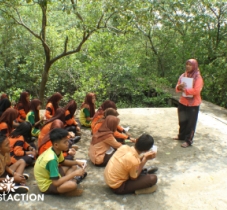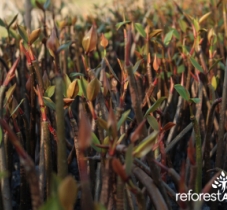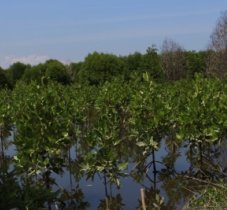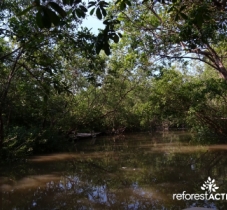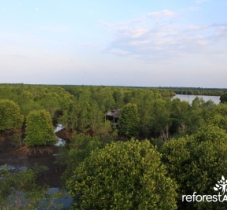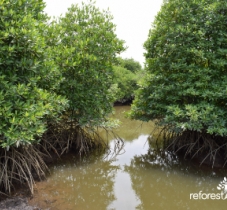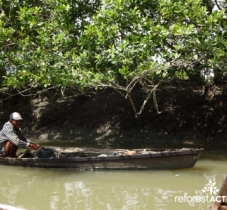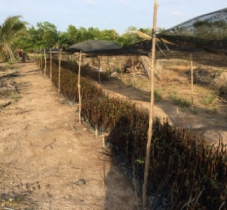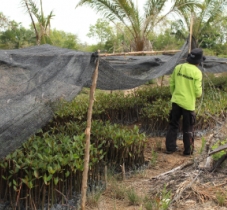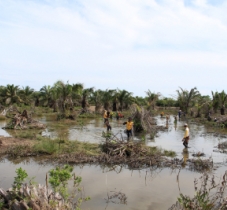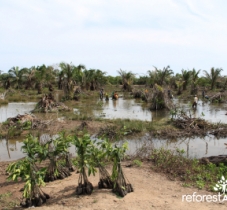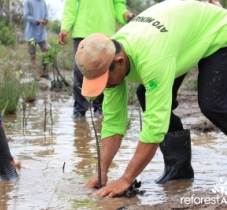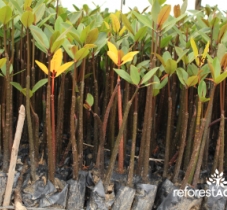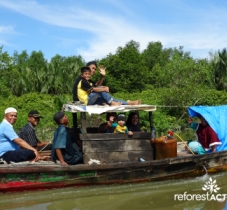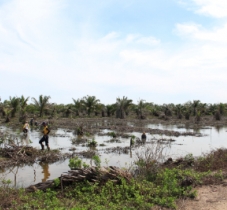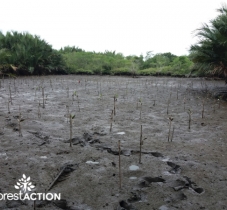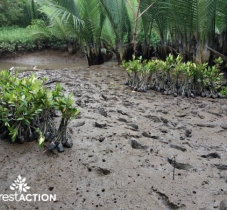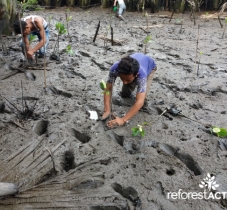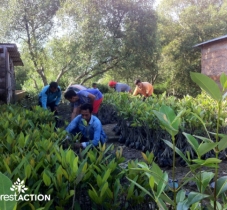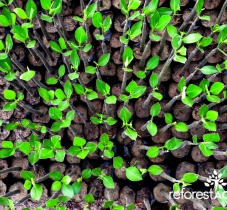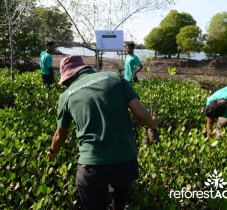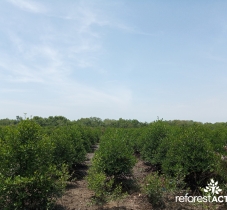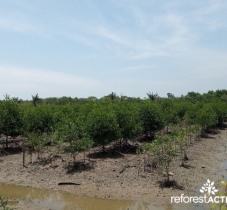Project description
In North Sumatra, Reforest'Action is financing the planting of five different species of mangroves in order to restore the ecosystems and enrich the diversity of species. In partnership with the local NGO Yagasu, environmental awareness programmes are also being set up.
Indonesia is the most deforested country in the world, ahead of Brazil. The forest is disappearing twice as fast as in the Amazon: the equivalent of a football pitch area is destroyed every ten seconds, which represents 840,000 hectares of forest per year. Yet, Indonesian forests remain rich sources of biodiversity. They are home to 10% of the world's plant species, 12% of mammal species, 16% of reptile species and 17% of bird species.
The province of North Sumatra is particularly affected by deforestation. In 1987, the province had 200,000 hectares of mangroves. Today, less than half of it remains, representing only 83,000 hectares. This massive deforestation is mainly due to anthropic pressure: mangroves are converted into areas for intensive shrimp and fish farming, and illegally cut down to make firewood or charcoal.
Thus, Reforest’Action decided to join forces with a local NGO called YAGASU, which has been working since the 2004 tsunami, a trauma the population is still trying to recover from.
YAGASU has set up larger programmes that include mangrove restoration and protection, scientific research programmes on the carbon sequestration capacity of mangroves, environmental education and awareness-raising programmes, and economic development of local communities through income-generating activities around the mangrove. In this way, our partner has mobilised thousands of men and women, and has enabled a 57% increase in the average income of local communities by developing income-generating activities around the mangrove.
The project :
The planting project aims to restore a mangrove forest on the Sumatra island, on an area located between the province of Aceh and the northern province of Sumatra Utara, the fourth most populous province in Indonesia.
This mangrove forest is one of the 14 major terrestrial biomes. 20,000 people from 52 different villages are involved in the project. Associations of women are mobilised to raise people's awareness on the rich array of resources offered by mangroves. The aim is to encourage its preservation and the development of peripheral economic activities based on its riches.
Mangroves are among the most productive ecosystems in terms of biomass on our planel. The most notable tree species are mangroves, with their stilted roots. This explains the planting of 5 different species of mangroves in this project.
Different species of mangrove trees are planted on the field, in order to enrich the diversity of mangrove species such as : Rhizophora Apiculata, Rhizophora Stylosa, Rhizophora Mucronata, Avicennia SPP and Soneratia SPP.
Benefits of the project :
- Preservation of biodiversity: the mangrove is an essential ecosystem for the life of many animal and plant species
- Carbon sequestration: mangroves retain 3 to 5 times more carbon than the Amazon and other tropical forests.
- Reduction of natural risks by protecting the coastline from earthquakes, rising water levels and soil erosion.
- In addition, mangroves promote the development of coastal populations. Indeed, thanks to the well of biodiversity constituted by the mangrove, sustainable fishing becomes possible again. This activity generates income and is the most productive and profitable for local communities. Moreover, thanks to the fruits and leaves of the mangrove trees, the inhabitants of the villages bordering the mangrove produce organic batiks (natural ink from the branches), cookies (from mangrove flour), juices, cakes and chips.
Thanks to Yagasu, the local populations have turned the mangrove into an economic resource by developing income-generating activities. Indeed, ecological virtues associated with economic aspects encourage the local populations that live near mangroves to protect it.
Planting schedule:
If the conditions are favorable, here are the different phases of the project, renewable each year depending on the funding:
- February: nurseries are set up, propagules (small mangrove plants) are collected
- March: propagule are growing
- April - May - June: nursery plants are looked after and maintained
- July - August: Trees are introduced on the plots
- November - December: the trees planted are monitored


